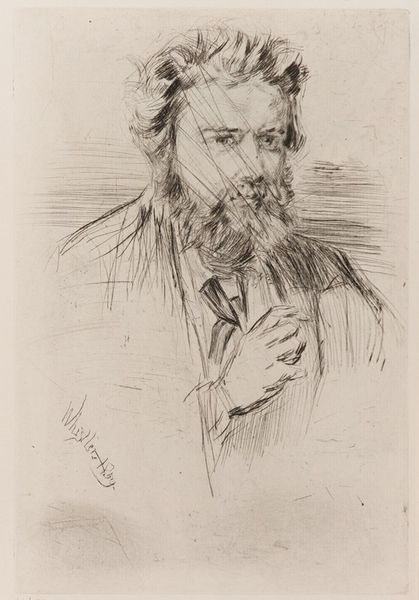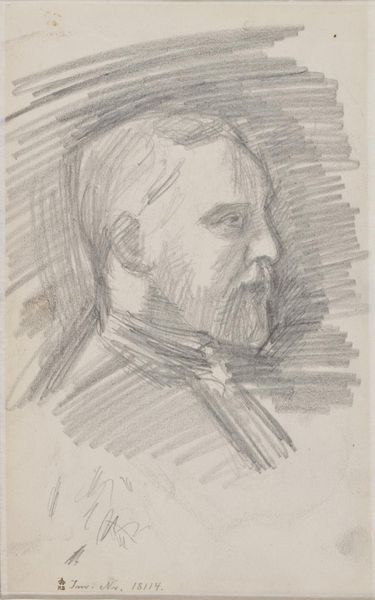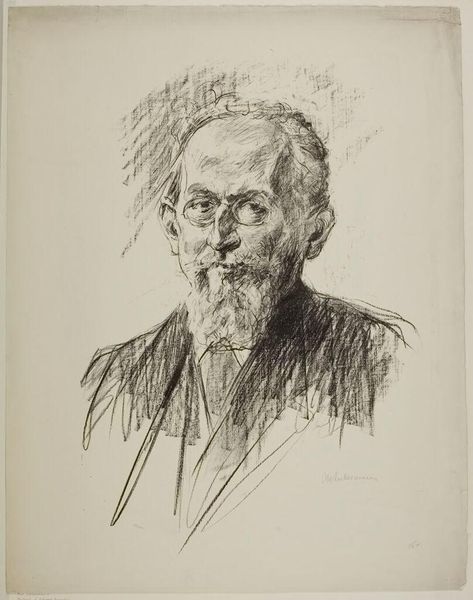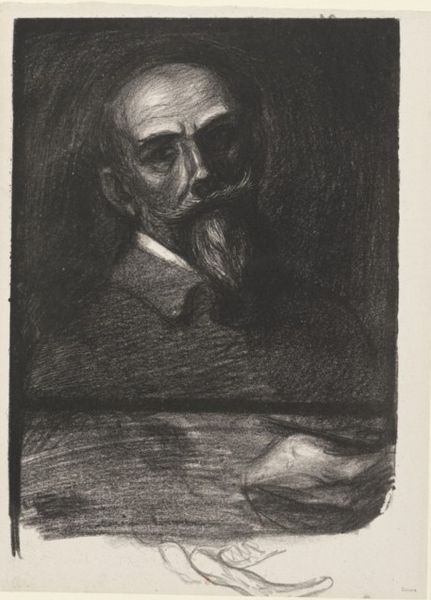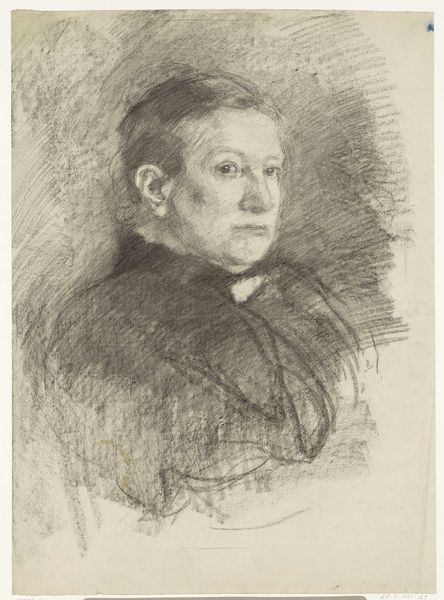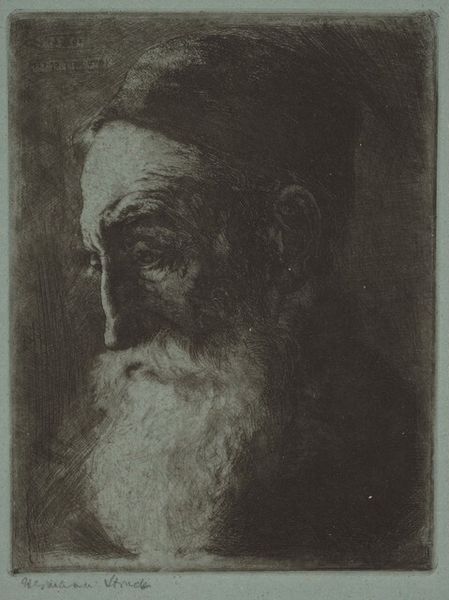
drawing, pencil
#
portrait
#
pencil drawn
#
drawing
#
pencil sketch
#
pencil drawing
#
pencil
#
expressionism
#
portrait drawing
#
pencil work
Dimensions: height 162 mm, width 131 mm
Copyright: Rijks Museum: Open Domain
Editor: We're looking at "Portrait of a Man with Beard and Pipe" by Gerrit Willem Dijsselhof, probably made sometime between 1876 and 1924. It's a pencil drawing. I'm struck by how the shading around the figure almost traps him within the frame. What do you see in this piece? Curator: The compelling element here resides within the stark contrast between the meticulously rendered face and the chaotic energy of the surrounding hatched lines. Note the artist’s deft handling of chiaroscuro, particularly in the modeling of the beard and facial features. It creates an intriguing tension. Do you perceive the lines as merely background? Editor: I suppose I did initially. I hadn't considered that tension you mentioned. It’s almost like the hatching is an active force rather than just a shadow. Does that deliberate choice influence your interpretation? Curator: Indeed. It prompts an inquiry into the function of these lines, questioning their semiotic potential. Are they symbolic of inner turmoil, societal pressures, or simply a stylistic flourish? Consider the materiality itself. The rough texture of the paper against the sharp precision of the pencil evokes a visceral quality. What affective response does this duality solicit from you? Editor: I see what you mean. There’s definitely a raw, unfinished quality that makes it feel immediate, almost urgent. I appreciate how looking closely at the lines changes my perception from a somber mood to something more dynamic. Curator: Precisely. By dissecting its formal components, we unlock the artwork's expressive potential. The careful distribution of tonal values, the intentional application of lines – they guide us towards a deeper comprehension. Editor: It’s amazing how much there is to unpack just by focusing on those elements. Thanks for that insightful perspective.
Comments
No comments
Be the first to comment and join the conversation on the ultimate creative platform.

